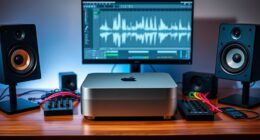When considering podcast advertising costs, factors like ad format, placement, audience demographics, and targeting influence pricing structures. Various ad formats include pre-recorded ads, host-read sponsorships, and affiliate partnerships. Ad placements such as pre-roll, mid-roll, or post-roll ads also affect costs. Targeting specific demographics, regions, or niche audiences can impact rates. Audience size and engagement levels are pivotal in determining campaign expenses. Additionally, there are production costs like scriptwriting and voiceover fees. Ad attribution expenses and cost-effectiveness evaluations are essential. Understanding podcast ad rates involves analyzing format, audience size, engagement, and industry trends. Discover more insights into podcast advertising costs by exploring the intricate dynamics at play.
Key Takeaways
- Ad costs vary based on ad format, placement, audience demographics, and campaign targeting.
- Factors include ad production, attribution expenses, CPM rates, and ROI evaluation.
- Ad rates are influenced by audience size, engagement levels, and niche audience specificity.
- Consider industry trends and compare with other marketing channels for cost-effectiveness.
- Determination factors include ad format, audience size, listener engagement, and industry-specific pricing trends.
Factors Influencing Podcast Ad Costs
When determining podcast ad costs, various factors such as the type of advertising format, ad placement, and audience demographics play an essential role in shaping the overall pricing structure. Podcast ad rates can vary greatly based on these factors. For instance, ad placements like pre-roll, mid-roll, or post-roll ads each come with different pricing structures. Additionally, the size and characteristics of the target audience influence costs, with larger audiences generally commanding higher rates. Niche audiences, despite being smaller, can also impact pricing due to their specialized interests and higher engagement levels.
Moreover, the choice between pre-recorded ads and host-read sponsorships affects the cost structure. Pre-recorded ads typically range from $15 to $30 CPM, while host-read sponsorships can be priced between $25 to $40 CPM. It's worth mentioning that beyond placement and format, additional expenses such as ad production costs for scriptwriting, voiceover talent, and sound editing can contribute to the overall podcast advertising costs. Understanding these factors is essential for businesses aiming to optimize their advertising budget effectively and reach their target audience efficiently.
Types of Ad Formats
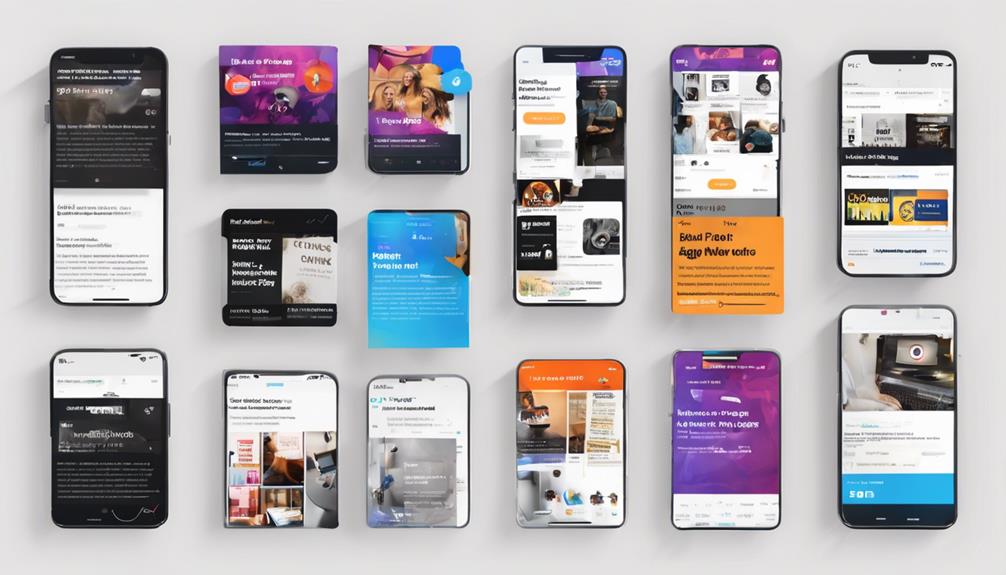
Exploring various ad formats in podcast advertising allows businesses to tailor their messages effectively to reach their target audience. When considering ad formats, options such as pre-recorded ads and host-read sponsorships stand out.
Pre-recorded ads, with a cost ranging from $15 to $30 CPM, offer a cost-effective advertising solution. On the other hand, host-read sponsorships, priced between $25 to $40 CPM, provide a more personalized approach that enhances audience engagement.
Beyond these, ad formats like branded content, affiliate partnerships, and social media extensions present diverse marketing strategies for advertisers to choose from. The decision between pre-recorded ads and host-read sponsorships typically hinges on factors like budget, brand voice, and audience engagement goals.
Podcast Ad Placements
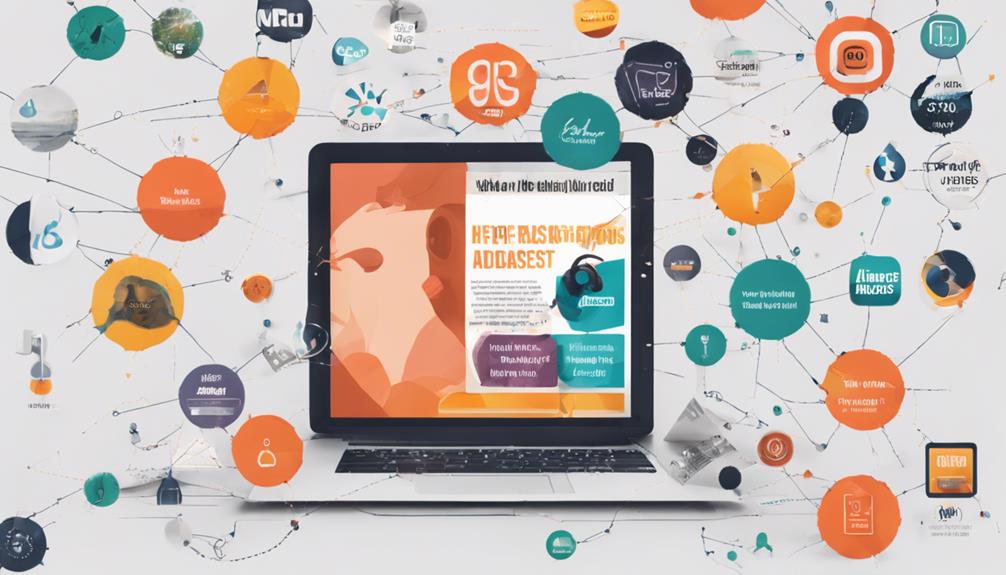
When it comes to podcast ad placements, the options include pre-roll, mid-roll, and post-roll ads, each influencing listener engagement differently.
The positioning of ads within a podcast episode impacts how effectively the message resonates with the audience.
Understanding the pricing factors and effectiveness of each placement is essential for optimizing the impact of podcast advertising campaigns.
Placement Options
Podcast ad placements, including pre-roll, mid-roll, and post-roll ads, offer varying levels of listener engagement and cost-effectiveness. Each placement plays an important role in the success of an advertising campaign, impacting the ROI significantly. Here is a breakdown of the different podcast ad placements:
| Ad Placement | Description | Effectiveness |
|---|---|---|
| Pre-roll | Placed at the beginning of episodes | High listener attention |
| Mid-roll | Positioned in the middle of episodes | Prime spot for value |
| Post-roll | Featured at the end of episodes | Effective with slightly lower value |
Choosing the right ad placement is essential to ensure maximum listener engagement and cost-effectiveness in your podcast advertising strategy.
Pricing Factors
Analyzing the pricing factors for different podcast ad placements reveals varying costs and effectiveness in engaging listeners and maximizing ROI. Pre-Roll Ads are priced higher, as they capture initial listener attention effectively.
Mid-Roll Ads, on the other hand, are considered the most impactful placement due to ideal listener engagement and retention.
Post-Roll Ads, although effective, are generally valued lower in podcast advertising than Pre-Roll and Mid-Roll placements.
The placement of podcast ads greatly influences pricing and the overall effectiveness of reaching the target audience.
Understanding the nuances of each placement option is vital for maximizing the impact of podcast ads while considering the associated advertising costs.
Campaign Targeting Impact
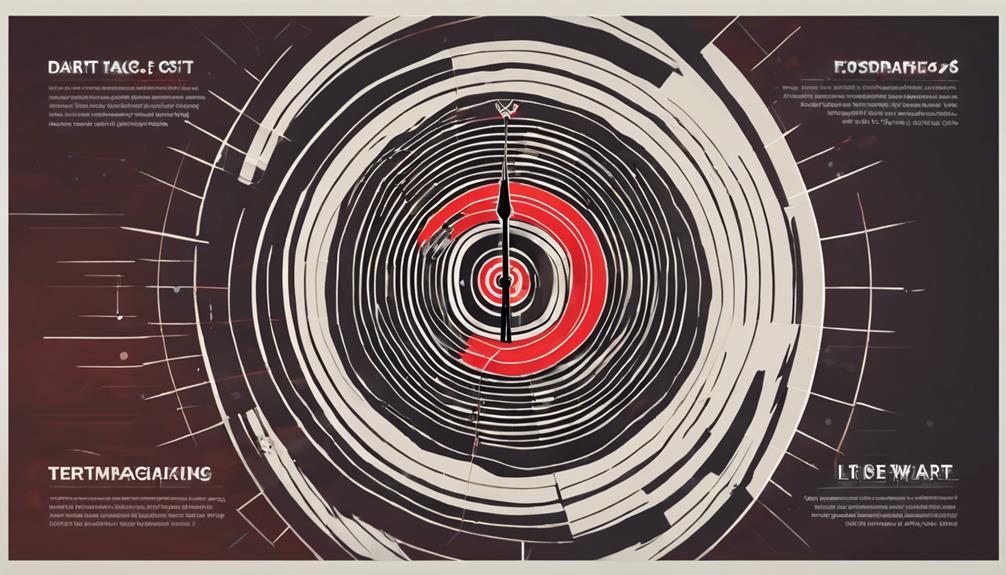
When targeting specific demographics and geographic regions in podcast advertising campaigns, we can observe a direct impact on costs. The more specific the audience criteria, the more advertisers may need to invest to reach those niche groups effectively.
Audience Demographics
Understanding the diverse demographics of podcast audiences is essential for advertisers seeking to maximize the impact and effectiveness of their campaigns. Audience demographics play a vital role in determining podcast advertising costs, with niche audiences often commanding higher rates due to their value to advertisers.
Targeting options such as geographic location, podcast categories, and specific audience demographics can help advertisers tailor their campaigns for maximum effectiveness and ROI. Higher engagement levels and potential reach associated with larger podcast audiences generally lead to higher CPM rates.
Advertisers are willing to pay more for valuable demographics that align with their target market's interests. The quality and relevance of audience demographics are key factors in the success and cost of podcast advertising campaigns.
Geographic Reach
To maximize the impact of podcast advertising campaigns, advertisers can strategically target specific regions or countries through geographic reach, enhancing relevance and engagement with local audiences. By tailoring messages to suit cultural nuances and market preferences, advertisers can drive conversions effectively. Geographic targeting allows for optimization of campaigns in different languages, ensuring that the content resonates with the intended audience. Ad costs may vary based on the prime locations chosen for the campaign, with higher rates typically seen in markets with high demand. Connecting with local audiences through geographic reach not only increases the effectiveness of podcast advertising but also helps brands establish a more personalized connection with their target market.
| Geographic Targeting | Benefits | Considerations |
|---|---|---|
| Tailored messages for local audiences | Increased relevance and engagement | Higher ad costs in prime locations |
| Optimization for cultural nuances and market preferences | Enhanced campaign effectiveness | Varied rates based on demand |
| Drive conversions effectively | Personalized connection with target market | Language adaptation may be required |
Audience Size and Demographics

In podcast advertising, the size and demographics of the audience play a significant role in determining the cost and effectiveness of marketing campaigns. Larger podcast audiences generally lead to higher advertising costs as they offer increased reach and exposure for brands.
Advertisers often value niche audiences with specific demographics or interests that align closely with their brand, leading to potentially higher costs for targeting these specialized groups. Targeting options in podcast advertising, such as geographic location, podcast categories, and audience demographics, allow for personalized marketing strategies tailored to engage specific listener groups effectively.
The importance of the audience is critical, with valuable niche audiences being prioritized for their higher engagement levels and potential for increased conversion rates. Advertisers consider podcast categories, geographic locations, and engagement levels when evaluating costs and planning marketing campaigns, aiming to reach the most relevant and engaged listeners for best results.
Additional Production Costs
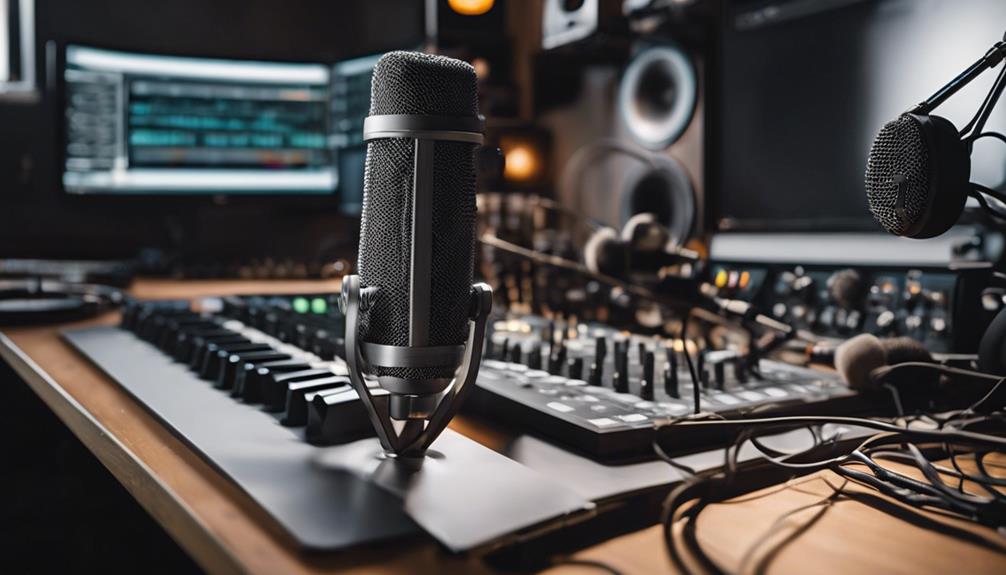
When deliberating on podcast advertising, it's important to take into account the additional production costs involved, such as scriptwriting, voiceover talent fees, and sound editing expenses. Working with experienced professionals for ad production can guarantee high-quality content but may come with added expenses. Hidden costs like attribution and reporting fees are necessary for tracking ad performance and making data-driven decisions. An upfront investment in ad production can enhance listener engagement and the overall effectiveness of the advertising campaign. Advertisers should carefully budget for these ad production costs to create compelling and engaging podcast ads.
| Production Costs | Description | Importance |
|---|---|---|
| Scriptwriting | Crafting the ad content and messaging | Ensures relevance |
| Voiceover Talent Fees | Hiring skilled voices for the ad | Enhances engagement |
| Sound Editing | Polishing audio quality for professionalism | Ensures high production |
Considering these aspects helps in creating impactful podcast ads that resonate with the audience and deliver the intended message effectively.
Ad Attribution Expenses
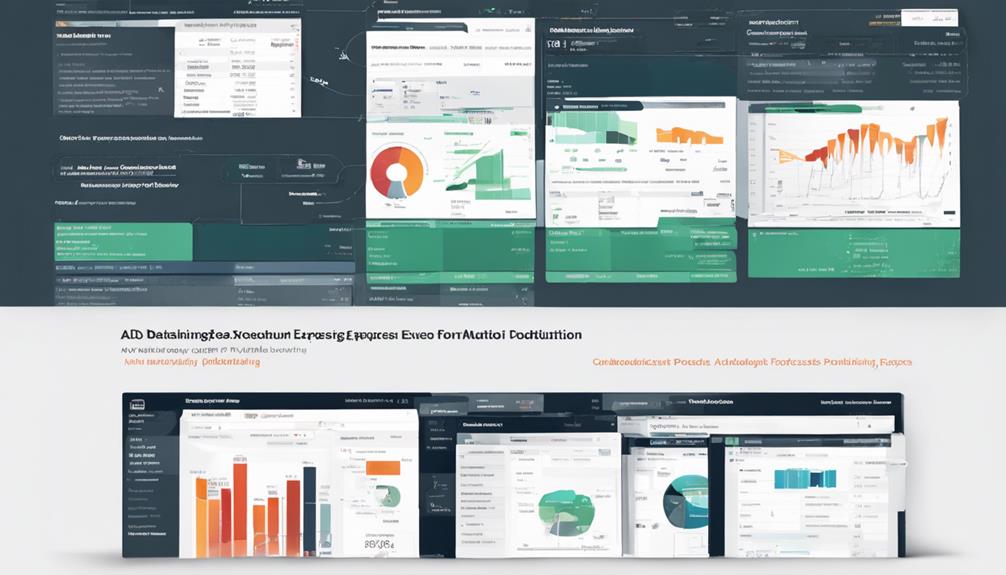
Understanding the significance of ad attribution expenses is crucial in evaluating the performance and impact of podcast advertising campaigns. Ad attribution expenses encompass the tools and services required to track and attribute the effectiveness of podcast ads in prompting actions such as website visits, calls, or purchases.
These costs are essential for calculating the return on investment (ROI) of podcast advertising endeavors. By utilizing attribution tools, advertisers can explore data analysis, refine campaigns, and make well-informed decisions for future podcast ad strategies.
Investing in ad attribution not only facilitates a deeper understanding of campaign performance but also paves the way for more targeted and successful podcast advertising initiatives. Leveraging these tools enables businesses to optimize their advertising strategies and enhance the overall effectiveness of their podcast campaigns, ultimately leading to more impactful and successful outcomes in the field of podcast advertising.
Cost Effectiveness Evaluation
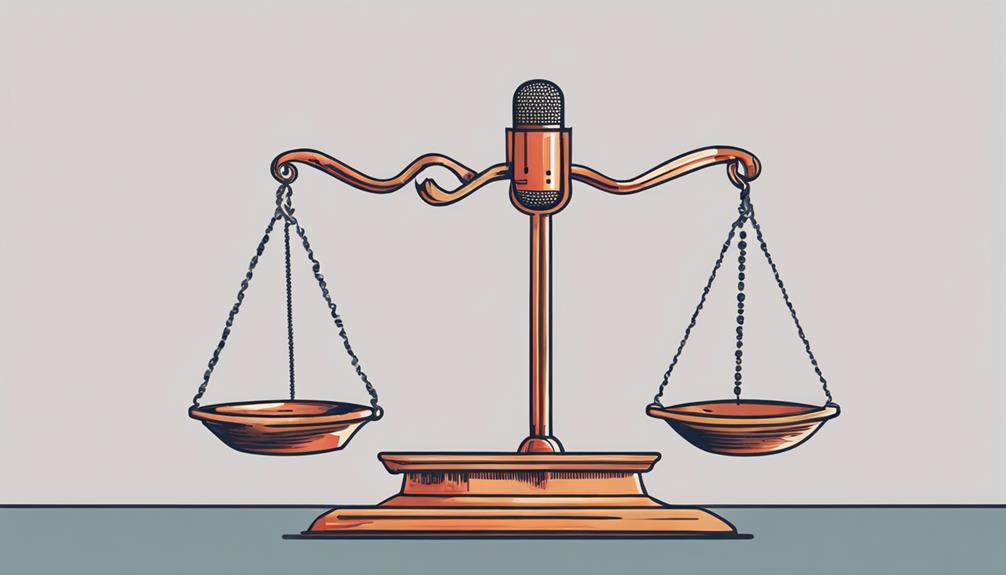
Evaluating the cost effectiveness of podcast advertising involves analyzing various factors such as CPM rates, ad production expenses, and audience demographics. CPM, or Cost Per Mille, plays an important role in determining the cost of podcast ads, with pre-roll ads typically averaging $15 CPM and mid-roll ads costing more, around $30 to $40 CPM.
The choice of ad format (pre-roll, mid-roll, post-roll) and its placement also impact overall costs. Advertisers need to factor in ad production costs like scriptwriting, voiceover, and editing, along with tracking/reporting expenses for a thorough evaluation. Understanding the target audience, their demographics, engagement levels, and expected return on investment (ROI) are essential in evaluating the cost effectiveness of podcast advertising.
Additionally, comparing podcast advertising costs to other marketing channels can provide insights into the relative benefits and efficiency of investing in podcast ads for reaching the desired audience effectively.
Podcast Ad Rates Determination
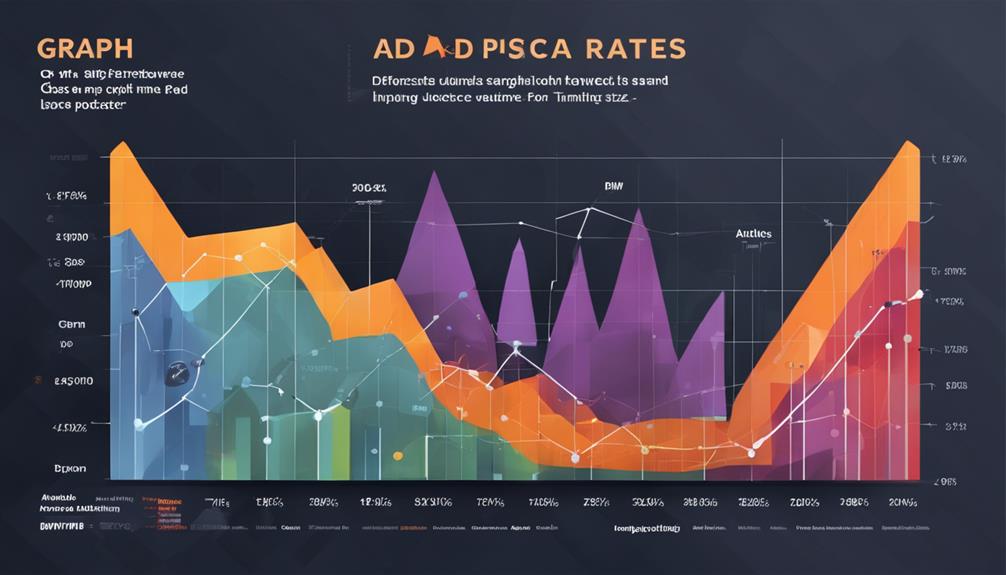
Determining podcast ad rates involves considering factors like ad format, placement, audience size, demographics, and listener engagement levels. Advertisers typically pay between $15 to $40 CPM for podcast advertising, with mid-roll ads often seen as premium spots due to their effectiveness.
Niche audience specificity, brand alignment, industry competition, and listener location all play a role in influencing podcast ad rates. Understanding CPM rates is essential for setting competitive ad rates and attracting higher-paying sponsors in the podcast advertising domain.
Ad effectiveness in podcasts is driven by revenue growth opportunities, brands' willingness to engage with podcast audiences, and the use of various ad styles like affiliate marketing and direct-response ads with promo codes for tracking. By analyzing these factors and staying attuned to industry trends, podcast creators and advertisers can optimize their strategies to reach their target audiences effectively and maximize the impact of their podcast advertising campaigns.
Frequently Asked Questions
How Much Do Podcasters Charge for Ads?
Podcasters charge varying rates for ads, influenced by factors like audience size and engagement levels. Rates typically range from $15 to $40 CPM, with pre-roll ads costing $15 to $30 CPM and host-read sponsorships ranging from $25 to $40 CPM. Advertisers may pay more for niche audiences or premium mid-roll placements.
Additional costs like ad production and tracking/reporting must be factored in when determining podcast ad costs.
What's the Rate for a 15 Second Podcast Ad?
We see that the rate for a 15-second podcast ad can range from $7.50 to $15 based on the CPM model. Factors like audience size, niche specificity, and ad placement influence these costs.
Shorter ad lengths, like 15-second spots, are cost-effective for brands targeting podcast audiences. Advertisers might pay higher rates for ads on podcasts with larger and more engaged listener bases.
Understanding CPM rates and audience demographics is essential in determining ad costs.
Is Podcast Advertising Worth It?
Podcast advertising is unquestionably worth it. Engaging audiences, fostering trust, and driving actions like website visits and purchases are key benefits. Host recommendations hold weight, and listeners actively seek out podcast content for entertainment and information.
Brands appreciate podcast ads for their reach, audience targeting, and creative storytelling avenues. The industry's rapid growth and projected ad spend demonstrate the effectiveness and potential of podcast advertising in reaching and resonating with diverse audiences.
How Many Ads in a 30 Minute Podcast?
In a 30-minute podcast, you can expect to hear around 2 to 4 ad spots strategically placed throughout the episode. These ads, including pre-roll, mid-roll, and post-roll placements, aim to strike a balance in exposure for advertisers while maintaining a positive listener experience.
The number of ads can vary based on the podcast's audience, revenue goals, and overall listener engagement objectives. Advertisers and hosts work together to find the best placement to maximize impact and engagement.
Conclusion
To summarize, podcast advertising costs can vary based on factors such as ad formats, placements, targeting, audience size, and production expenses.
One interesting statistic to note is that the average cost per thousand impressions (CPM) for podcast ads ranges from $18 to $50, making it a cost-effective marketing strategy for reaching a highly engaged audience.
By understanding the various factors influencing podcast ad costs, businesses can make informed decisions to maximize their advertising budget effectively.








